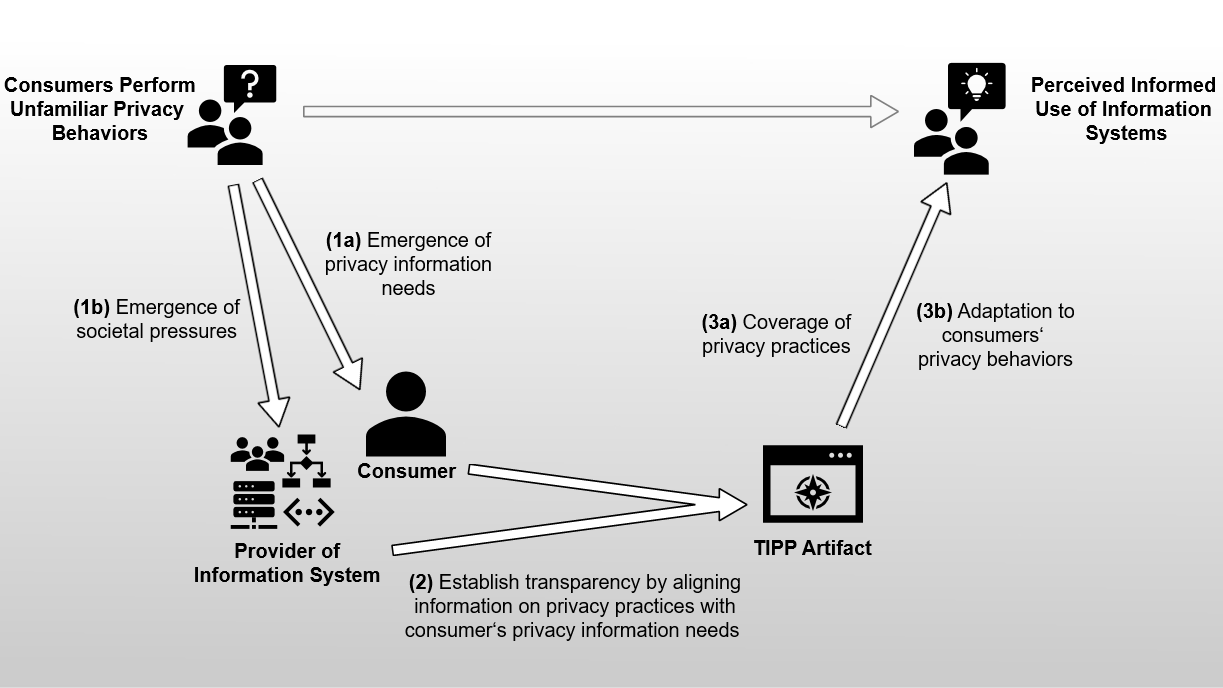Neuer Artikel "A Design Theory for Transparency of Information Privacy Practices" bei ISR akzeptiert.

(06.07.2023) Der Artikel "A Design Theory for Transparency of Information Privacy Practices" von Tobias Dehling und Ali Sunyaev wurde zur Veröffentlichung bei Information Systems Research angenommen. Eine Vorabversion des akzeptierten Manskripts kann auf Research Gate aufgerufen werden. Die finale Version des Artikels wird unter der DOI 10.1287/isre.2019.0239 veröffentlicht werden.
Kurzfassung: The rising diffusion of information systems (IS) throughout society poses an increasingly serious threat to privacy as a social value. One approach to alleviating this threat is to establish transparency of information privacy practices (TIPP) so that consumers can better understand how their information is processed. However, the design of transparency artifacts (eg, privacy notices) has clearly not followed this approach, given the ever-increasing volume of information processing. Hence, consumers face a situation where they cannot see the ‘forest for the trees’ when aiming to ascertain whether information processing meets their privacy expectations. A key problem is that overly comprehensive information presentation results in information overload and is thus counterproductive for establishing TIPP. We depart from the extant design logic of transparency artifacts and develop a theoretical foundation (TIPP theory) for transparency artifact designs useful for establishing TIPP from the perspective of privacy as a social value. We present TIPP theory in two parts to capture the sociotechnical interplay. The first part translates abstract knowledge on the IS artifact and privacy into a description of social subsystems of transparency artifacts, and the second part conveys prescriptive design knowledge in form of a corresponding IS design theory. TIPP theory establishes a bridge from the complexity of the privacy concept to a metadesign for transparency artifacts that is useful to establish TIPP in any IS. In essence, transparency artifacts must accomplish more than offering comprehensive information; they must also be adaptive to the current information needs of consumers.
